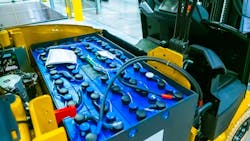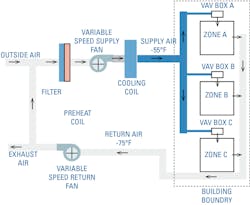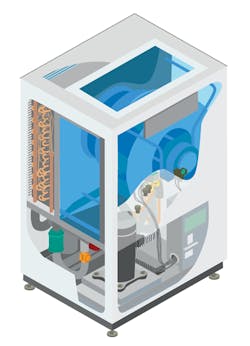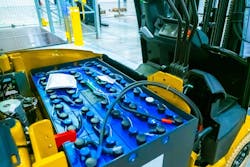Bringing Sustainability from the Boardroom to Ground Level
Sustainability is a paramount concern around the globe.
Numerous countries worldwide have established ambitious targets to curtail their greenhouse gas emissions, either through the Paris Agreement or other methods, complemented by goals driven by provinces, states or other local approaches.
This emphasis on sustainability has also infiltrated the corporate sphere, with companies worldwide seeking to incorporate more eco-conscious decisions into their priorities. An impressive 81% of the world’s leading companies consider sustainability as a crucial aspect of their corporate agenda, while in 2021, 90% of companies listed in the S&P 500 released a sustainability report.
In many ways, the push for sustainability is reaching a critical junction, where industrial sensing advances are pushing initiatives beyond the boardroom and onto facilities floors around the globe in a number of ways.
Focus on Facility Efficiency
Sustainability is one of the primary ways advances in sensing technology has been tied to efficient operations of individual facilities. Not only have more and more facilities added solar panels, electric charging stations and other features, but existing platforms have also undergone significant changes and improvements—starting with HVAC.
According to the United States Department of Energy, HVAC systems typically consume about 40% to 60% of a commercial building’s total energy use, making these systems the best opportunities for achieving a reduction in energy costs and consumption.
READ MORE: Hannover Messe Wraps up on an “Optimistic” Note
Updated system designs—such as variable air volume layouts—also allow for more efficient cooling compared to traditional systems. In a variable air volume design, the system maintains the air supply at a constant temperature while individual zone thermostats vary the flow of air to each space maintaining the desired zone temperature. This is unlike a constant volume system that maintains a constant volume of airflow to the space but changes the temperature of the air stream in response to space temperature changes.
The energy savings in this system design are driven by a reduction in fan usage, as they are often utilized at less than full capacity. It also results in reduced compressor wear and fan noise. While the specific energy savings of VAV systems vary based on a number of building and climate factors, some studies have found energy savings of 20-40% compared to constant volume systems.
Manufacturing facilities are also evaluating industrial heat pump designs, leveraging technology more commonly associated with residential applications.
Heat pumps work by extracting heat from the surrounding air, ground or water and transferring it to a refrigerant coolant. The coolant is then compressed—which significantly increases its temperature— and transferred to the location designated for heat. Heat is then extracted by either running air or water over the hot coolant.
READ MORE: Toward Carbon Neutrality: igus Plugs Heat Recovery Invention at Hannover Messe
Heat pumps are more efficient than traditional electric heaters because they use electricity to operate the compressor, pump and fans as opposed to a resistive heat source.
To operate properly, their program logic controller (PLC) needs temperature sensor inputs from multiple locations throughout the system. Depending on the purpose of the heat pump, these could include temperature readings of outdoor air, indoor air and refrigerant at multiple locations.
Electrification Impact Widening
The impacts of electrification have also expanded within the manufacturing and warehouse environment with electrified forklifts, scissor lifts and other pieces of industrial equipment.
As has been seen with passenger vehicles, the advancement of lithium-ion and other battery technologies have dramatically shifted the balance between electric and gas/diesel models.
While equipment powered by lead acid batteries has been in the market for decades, those models carried a number of drawbacks. Batteries needed to be topped off with water, in addition to requiring extended charging cycles (with cool-down time), and performance degraded quickly during their working day.
READ MORE: 5 for Friday: A Connected Plant is Essential for the Future
New battery chemistries allow for on-demand charging without cool-down times or other drawbacks, allowing vehicles to charge in small stretches throughout the day and continue running through a 24-hr period with minimal downtime. The space previously reserved for battery storage and charging can also be repurposed for a more valuable use.
Global Sustainability Efforts Leverage Continued Technological Growth
The common thread in all these endeavors is a persistent drive towards intelligent and eco-friendly solutions, driven by a multitude of sensor applications.
No single measure can accomplish the comprehensive sustainability enhancements necessary for the forthcoming decades. However, smarter sensing will play a pivotal role in creating a sustainable future by leveraging current technology to drive continual improvements while promoting new technologies that will continue to shape the future.
Adithi Murthy is product line director – Industrial Sensors & Switches at Sensata Technologies.



